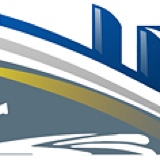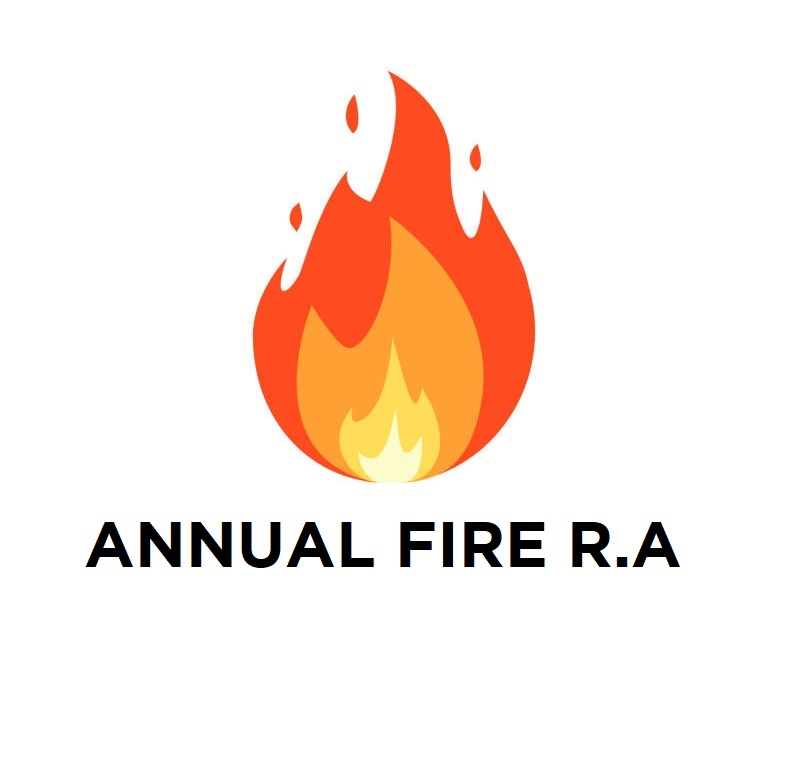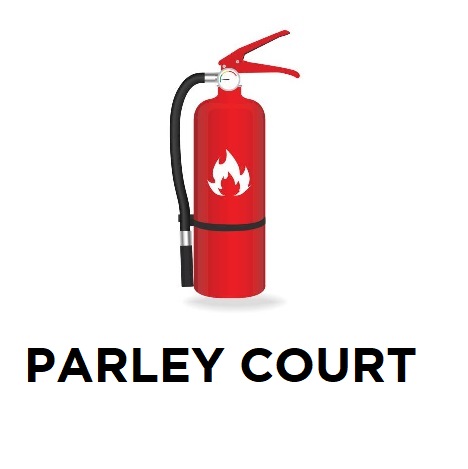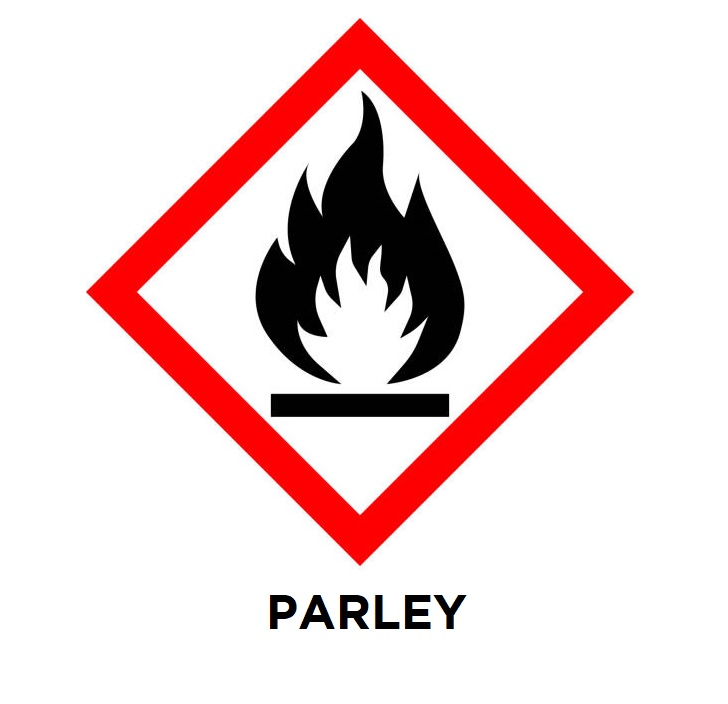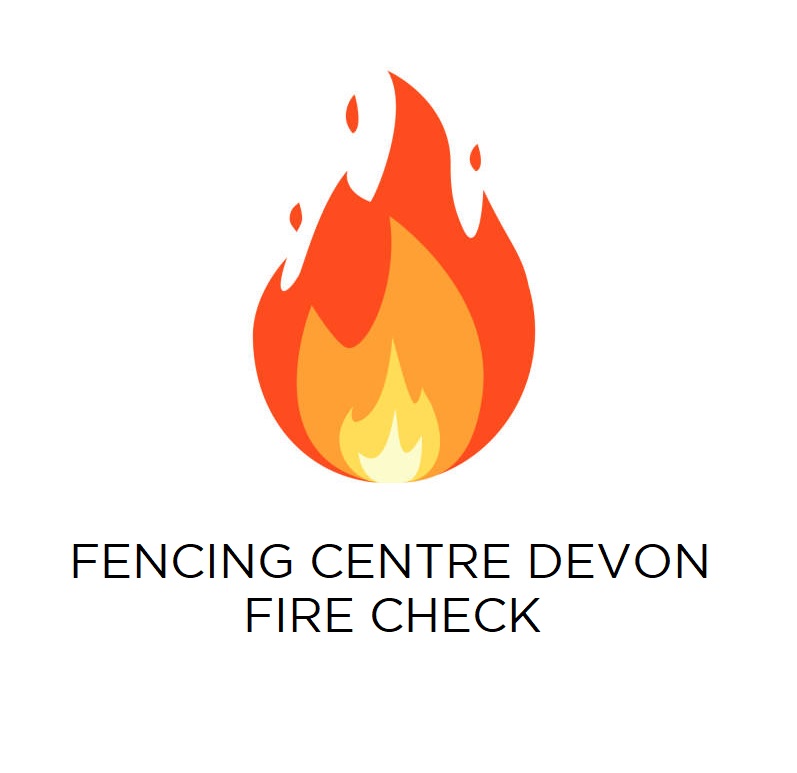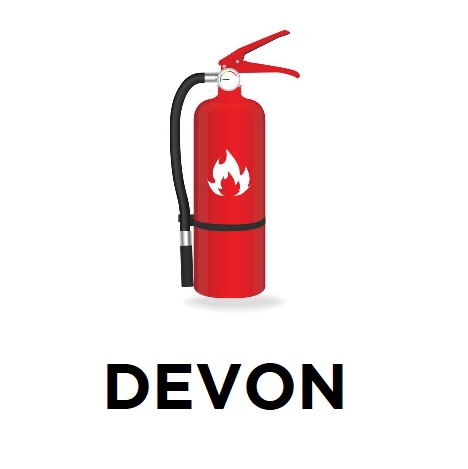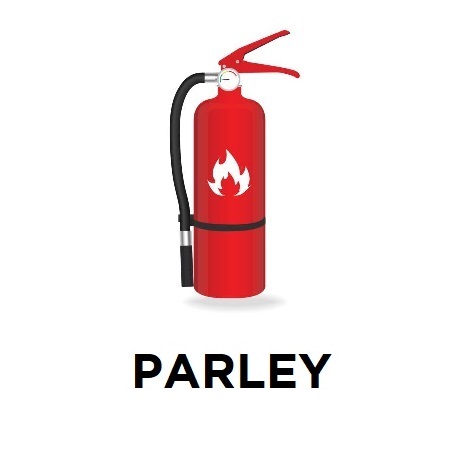Title Page
-
Site conducted
-
Conducted on
-
Prepared by
Help Page: (for help identifying further sources please see these examples)
-
1.1 - Identify sources of ignition: You can identify the potential ignition sources in your premises by looking for possible sources of heat which could get hot enough to ignite material found in your premises. These sources could include:
• smokers’ material, e.g. cigarettes, matches and lighters;
• naked flames, e.g. gas or liquid-fuelled open-flame equipment;
• sparks from burning products, e.g. bonfires in yards;
• vehicle exhausts;
• electrical, gas or oil-fired heaters (fixed or portable), room heaters;
• hot processes/hot work, e.g. welding by contractors or shrink wrapping;
• cooking equipment, hot ducting, flues and filters;
• extract fans for dust and fume removal systems, e.g. by build-up of debris;
• failure of temperature control themostats on hot work/cooking processes;
• heat sources, such as gas, electric, microwaves, radio frequency, thermal fluids;
• steam pipes;
• frictional generated heat from mechanical equipment;
• static charge from mechanical equipment, e.g. conveyor belts;
• poor electrical installations, e.g. overloads, heating from bunched cables, damaged cable;
• faulty or misused electrical equipment, e.g. refrigeration defrost systems, fork lift truck charging units;
• light fittings and lighting equipment, e.g. halogen lamps or display lighting or overhead lights too close to stored products;
• hot surfaces and obstruction of equipment ventilation;
• spontaneous ignition and self heating, e.g. oil soaked rags, paint scrapings, crumb and batter residue; and
• arson.
Indications of ‘near-misses’, such as scorch marks on furniture or fittings, discoloured or charred electrical plugs and sockets, cigarette burns, etc., can help you identify hazards which you may not otherwise notice. -
1.2 - Identify sources of Fuel: Anything that burns is fuel for a fire. You need to look for the things that will burn reasonably easily and are in enough quantity to provide fuel for a fire or cause it to spread to another fuel source. Some of the most common ‘fuels’ found in factories and warehouses are:
• flammable liquid-based products, such as paints, varnishes, thinners and adhesives;
• flammable liquids and solvents, such as petrol, white spirit, methylated spirit, cooking oils and disposable cigarette lighters;
• flammable chemicals, such as certain cleaning products, photocopier chemicals and dry cleaning products that use hydrocarbon solvents;
• flammable gases such as liquefied petroleum gas (LPG), flammable refrigerants and flammable gas propelled aerosols;
• stored goods and high piled or racked storage;
• foodstuffs containing sugar and oils, such as sugar-coated cereal and butter;
• plastics and rubber, such as video tapes, polyurethane foam-filled furniture and polystyrene-based display materials;
• paper products, such as stationery, advertising material and decorations;
• packaging materials;
• plastic and timber storage aids both in use and idle, such as pallets, octobins, and palletainers;
• combustible insulation, such as panels constructed with combustible cores;
• textiles and soft furnishings, such as hanging curtains and clothing displays; and
• waste products, particularly finely divided items such as shredded paper and wood shavings, offcuts, dust and litter/rubbish. -
3.1 - Reduce risks of Ignition: There are various ways that you can reduce the risk caused by potential sources of ignition, for example:
• Wherever possible replace a potential source by a safer alternative.
• Operate a safe smoking policy in designated smoking areas and prohibit smoking elsewhere.
• Replace naked flame and radiant heaters with fixed convector heaters or a central heating system. Restrict the movement of and guard portable heating appliances.
• Separate ignition hazards and combustibles, e.g. ensure sufficient clear space between lights and combustibles, build fire-resistant enclosures for hot processes, incinerate rubbish off site.
• Inspect and monitor ignition hazards so that preventative corrective actions can be undertaken, e.g. sample temperature on ducts and in oil baths, inspect for hot spots in electrical systems and mechanical systems.
• Ensure electrical, mechanical and gas equipment is installed, used, maintained and protected in accordance with the manufacturer’s instructions.
• Strictly control hot processes/hot work by operating permit to work schemes.
• Check all areas where hot work (e.g. welding) has been carried out to ensure that no ignition has taken place and no smouldering or hot materials remain that may cause a fire.
• Ensure that no one carrying out work on gas fittings which involves exposing pipes that contain or have contained flammable gas uses any source of ignition such as blow-lamps or hot-air guns.
• Ensure that no one uses any source of ignition while searching for an escape of gas.
• Take precautions to avoid arson. -
3.2 - Reduce risks of Fuel: There are various ways that you can reduce the risks caused by materials and substances which burn, for example:
• Reduce stocks of flammable materials, liquids and gases in open areas to a minimum. Keep remaining stock in dedicated storerooms or storage areas, preferably outside, where only the appropriate staff are allowed to go, and keep the minimum required for the operation of the business.
• Do not keep flammable solids, liquids and gases together.
• Keep areas containing flammable gases ventilated, e.g. fork lift truck charging units.
• Ensure flammable materials, liquids and gases, are kept to a minimum, and are stored properly with adequate separation distances between them.
• Ensure adequate aisle is maintained separation between stacks of stored goods.
• Separate fuel into fire-resistant enclosures, e.g. store raw materials and finished
goods separately.
• Use non-combustible building materials for building modifications.
• Remove, or treat large areas of highly combustible wall and ceiling linings, e.g. polystyrene or carpet tiles, to reduce the rate of flame spread across the surface.
• Develop a formal system for the control of combustible waste by ensuring that waste materials and rubbish are not allowed to build up and are carefully stored until properly disposed of, particularly at the end of the day.
• Take action to avoid any parts of the premises, and in particular storage areas, being vulnerable to arson or vandalism.
• Check all areas where hot work (e.g. post saving) has been carried out to ensure that no ignition has taken place and no smouldering or hot
materials remain that may cause a fire later. -
3.3 - Remove Sources of Oxygen: You can reduce the potential source of oxygen supplied to a fire by:
• closing all doors, windows and other openings not required for ventilation, particularly out of working hours;
• shutting down ventilation systems which are not essential to the function of the premises;
• not storing oxidising materials near or within any heat source or flammable materials; and
• controlling the use and storage of oxygen cylinders, ensuring that they are not leaking, are not used to ‘sweeten’ the atmosphere, and that where they are located is adequately ventilated.
Pre-Identified Risks
Pre-Identified Sources of Ignition
-
Are there any electrical; gas or oil heaters; fixed or portable?
-
Can you remove or reduce the risk?
-
Is this sufficient in reducing the risk to its minimum?
-
Are there any hot processes that take place?
-
Can you remove or reduce the risk?
-
Is this sufficient in reducing the risk to its minimum?
-
Are there any cooking appliances, hot ducting, flues and filters?
-
Can you remove or reduce the risk?
-
Is this sufficient in reducing the risk to its minimum?
-
Are there any naked flames?
-
Can you remove or reduce the risk?
-
Is this sufficient in reducing the risk to its minimum?
-
Are there any occurrences of arson, deliberate ignition or vandalism?
-
Can you remove or reduce the risk?
-
Is this sufficient in reducing the risk to its minimum?
-
Are there any poor electrical Installations?
-
Can you remove or reduce the risk?
-
Is this sufficient in reducing the risk to its minimum?
-
Are there any faulty or misused items of electrical equipment?
-
Can you remove or reduce the risk?
-
Is this sufficient in reducing the risk to its minimum?
-
Are there any chemical agents in rooms or laboratories? e.g Wood Preserver
-
Can you remove or reduce the risk?
-
Is this sufficient in reducing the risk to its minimum?
-
Is smoking allowed on the premises?
-
Can you remove or reduce the risk?
-
Is this sufficient in reducing the risk to its minimum?
-
Are there any halogen light fittings or display lighting equipment?
-
Can you remove or reduce the risk?
-
Is this sufficient in reducing the risk to its minimum?
-
Are there any central heating boilers?
-
Can you remove or reduce the risk?
-
Is this sufficient in reducing the risk to its minimum?
-
Are you aware of any hot surfaces and obstruction of equipment?
-
Can you remove or reduce the risk?
-
Is this sufficient in reducing the risk to its minimum?
-
Have any ‘near miss’ ignition incidents been reported?
-
Can you remove or reduce the risk?
-
Is this sufficient in reducing the risk to its minimum?
Pre-Identified Sources of Fuel
-
Are there any flammable liquids on the premises? e.g Diesel Tank / Wood Preservatives
-
Can you remove or reduce the risk?
-
Is this sufficient in reducing the risk to its minimum?
-
Are there any flammable chemicals on the premises?
-
Can you remove or reduce the risk?
-
Is this sufficient in reducing the risk to its minimum?
-
Are there flammable gases on the premises?
-
Can you remove or reduce the risk?
-
Is this sufficient in reducing the risk to its minimum?
-
Are there any paper, books or clothing?
-
Can you remove or reduce the risk?
-
Is this sufficient in reducing the risk to its minimum?
-
Are there any textiles or soft furnishings?
-
Can you remove or reduce the risk?
-
Is this sufficient in reducing the risk to its minimum?
-
Is there any waste or litter products not in the correct receptacles?
-
Can you remove or reduce the risk?
-
Is this sufficient in reducing the risk to its minimum?
Pre-Identified Sources of Oxygen
-
Are there any oxygen supplies from cylinder or piped storage?
-
Can you remove or reduce the risk?
-
Is this sufficient in reducing the risk to its minimum?
-
Other than natural airflow is there any abnormal amounts of Oxygen supply?
-
Can you remove or reduce the risk?
-
Is this sufficient in reducing the risk to its minimum?
-
Is there compressed air cylinders on site?
-
Can you remove or reduce the risk?
-
Is this sufficient in reducing the risk to its minimum?
1.0 - Identifying Further Sources
- 1. Identify Fire Hazards
-
In this section you should actively walk around the site to identify all the risks, this will be a source of fuel, oxygen or ignition, it will then ask if you can remove or reduce this risk and also who is at risk... Repeat this section until the site has been fully assessed.
-
Location of Hazard for example Back Barn or Sales Office
-
What risk have you found? (For help see section 1.1 and 1.2 of the help section)
-
What is the source of Oxygen?
- Natural airflow through doors and windows
- Oxidising Chemicals
- Oxygen supply in cylinders or piped systems
- Pyrotechnics (Fireworks)
-
Can the risk be removed or reduced? (see help section 3.3)
-
What has been done to reduce the risk?
-
Is this sufficient in reducing the risk to its minimum?
-
Has this risk been reduced to its minimum?
-
How has the risk been removed? Make a note here:
-
What is the source of ignition?
-
Can the risk be removed or reduced?
-
What has been done to reduce the risk?
-
Is this sufficient in reducing the risk to its minimum?
-
Has this risk been reduced to its minimum?
-
How has the risk been removed? Make a note here:
-
What is the source of Fuel?
-
Can this risk be removed or reduced?
-
What has been done to reduce this risk?
-
Is this sufficient in reducing the risk to its minimum?
-
Has this risk been reduced to its minimum?
-
How has the risk been removed? Make a note here:
2.0 - Identifying who is at risk
-
Who on site is at risk?
- Employees
- General Public
- Employees working alone and in noisy areas
- Unaccompanied children and young persons
- People unfamiliar with the premises, such visiting contractors
- People with disabilities
- People with language difficulties
- People in immediate vicinity of the premises
-
Have any special provisions been made for any of the groups selected?
-
Is there anyone particularly at risk?
3.0 - Evaluating Measures in Place
Evaluate Protection Measures:
-
Can the existing means of detection ensure a fire is discovered quickly enough for the alarm to be raised in time for all the occupants to escape to a place of total safety?
-
Are the fire detectors of the right type and in the appropriate locations?
-
Can the means of warning be clearly heard and understood by everyone throughout the whole building when initiated from a single point?
-
Are there provisions for people or locations where the alarm cannot be heard?
-
If the fire-detection and warning system is electrically powered, does it have a back-up power supply?
Evaluate Firefighting Equipment:
-
Are the portable fire extinguishers or any fixed firefighting equipment provided suitable for controlling the risks identified?
-
Are there enough extinguishers sited throughout the premises at appropriate locations?
-
Are the right types of extinguishers located close to the fire hazards and can users get to them without exposing themselves to risk?
-
Are the extinguishers visible or does their position need indicating?
-
Do you regularly check equipment provided to help maintain the escape routes?
-
Do you carry out daily checks to ensure that there is clear access for fire engines?
-
Are those who test and maintain the equipment competent to do so?
Evaluate Escape Routes:
-
Is your building constructed, particularly in the case of multi-storey buildings, so that, if there is a fire, heat and smoke will not spread uncontrolled through the building to the extent that people are unable to use the escape routes?
-
Are any holes or gaps in walls, ceilings and floors properly sealed, e.g. where services such as ventilation ducts and electrical cables pass through them?
-
Can all the occupants escape to a place of total safety in a reasonable time?
-
Are the existing escape routes adequate for the numbers and type of people that may need to use them, e.g. staff, contractors and disabled people?
-
Are the exits in the right place and do the escape routes lead as directly as possible to a place of total safety?
-
If there is a fire, could all available exits be affected or will at least one route from any part of the premises remain available?
-
Are the escape routes and final exits kept clear at all times?
-
Do the doors on escape routes open in the direction of escape?
-
Can all final exit doors be opened easily and immediately if there is an emergency?
-
Will everybody be able to safely use the escape routes from your premises?
-
Are the people who work in the building aware of the importance of maintaining the safety of the escape routes, e.g. by ensuring that fire doors are not wedged open and that combustible materials are not stored within escape routes?
-
Are there any particular or unusual issues to consider?
Evaluate Emergency Lighting
-
Are your premises used during periods of darkness?
-
Will there always be sufficient lighting to safely use escape routes?
-
Do you have back-up power supplies for your emergency lighting?
Evaluate Signs and Notices
-
Where necessary, are escape routes and exits and the locations of firefighting equipment indicated by appropriate signs?
-
Have you provided notices such as those giving information on how to operate security devices on exit doors, those indicating doors enclosing fire hazards that must be kept shut and fire action notices for staff and other people?
-
Are you maintaining all the necessary signs and notices so that they continue to be correct, legible and understood?
-
Are you maintaining signs that you have provided for the information of the fire and rescue service, such as those indicating the location of water suppression stop valves and the storage of hazardous substances?
Installation, testing and maintenance
-
Do you regularly check all fire doors and escape routes and associated lighting and signs?
-
Do you regularly check all your firefighting equipment?
-
Do you regularly check your fire-detection and alarm equipment?
-
Are those who test and maintain the equipment competent to do so?
-
Do you keep a log book to record tests and maintenance?
4.0 - Record, Plan, Inform, Instruct and Train
4.1 - Record your findings
-
Have you recorded the significant findings of your assessment?
-
Have you recorded what you have done to remove or reduce the risk?
-
Are your records available for inspection by the enforcing authority?
4.2 - Emergency Plans
-
Do you have an emergency plan and, where necessary, have you recorded the details?
-
Is the plan readily available for staff to read?
-
Is the emergency plan available to the enforcing authority?
4.3 - Instruct and Inform
-
Have you told your staff about the emergency plan?
-
Have you informed guests and visitors about what to do in an emergency?
-
Have you identified people you have nominated to do a particular task?
-
Do you have arrangements for informing other employers whose staff are guest workers in your premises, such as maintenance contractors<br>and cleaners?
Training
-
Have your staff received any fire safety training?
-
Have you carried out a fire drill recently?
-
Are employees aware of specific tasks if there is a fire?
-
Are you maintaining a record of training sessions?
5.0 - Review
-
Please add a date when you will next run a review
-
When is the next full test required by an outside contractor?






